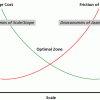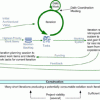Strategic advice to leverage new technologies
Technology is at the heart of nearly every enterprise, enabling new business models and strategies, and serving as the catalyst to industry convergence. Leveraging the right technology can improve business outcomes, providing intelligence and insights that help you make more informed and accurate decisions. From finding patterns in data through data science, to curating relevant insights with data analytics, to the predictive abilities and innumerable applications of AI, to solving challenging business problems with ML, NLP, and knowledge graphs, technology has brought decision-making to a more intelligent level. Keep pace with the technology trends, opportunities, applications, and real-world use cases that will move your organization closer to its transformation and business goals.
Recently Published
Small is beautiful in software. But that beauty conflicts with "the beast" -- the many rules, regulations, processes, stage gates, committees, compliance imperatives, and audits that inevitably accompany large-scale software projects. Big Agile can reconcile the systemic conflict between the two, preserving the beauty while taming the beast.
Since publication of the Cutter Business Enterprise Architecture Executive Report "Establishing the Business Architecture Practice: A Case Study" (Vol. 15, No.















